GEM for Fast Neutron
- Details
- Last Updated: Tuesday, 23 August 2016 17:31
The triple GEM specifically used for fast neutron detector has an aluminum cathode covered on the outer side by a polyethylene sheet, which makes it sensitive to neutrons by means of elastic (n,p) reactions on hydrogen. The produced protons with energy greater than one MeV, once crossed the aluminum sheet, ionize the gas producing hundreds of secondary electrons.
In the configuration described above, neutron counting is performed by recording the recoil protons that ionize the gas in the drift gap. The detector was exposed to different neutron sources to characterize and measure the performance
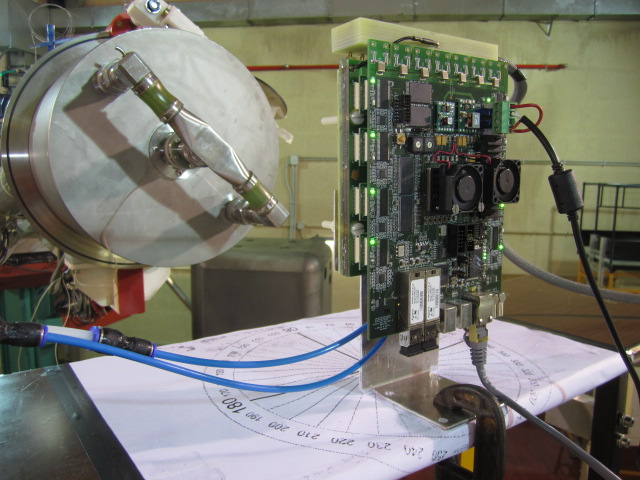 |
First of all at FNG at Frascati-ENEA, a neutron source that uses fusion reaction DD and DT with two possible energies of 2.5 and 14 MeV respectively (see figure). An efficiency of 3.8 10-5 was measured and a capability to discard protons emitted at θ>45° was proved. Other prototypes with different thickness of polyethylene and aluminum show efficiencies greater than 10-4. | |
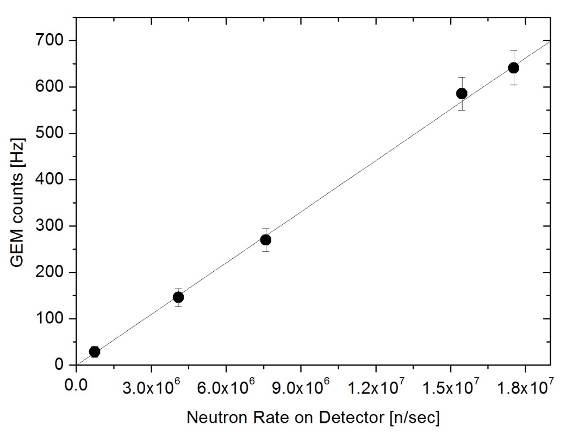 |
The linearity measured at FNG compared with the NE213 counter. | |
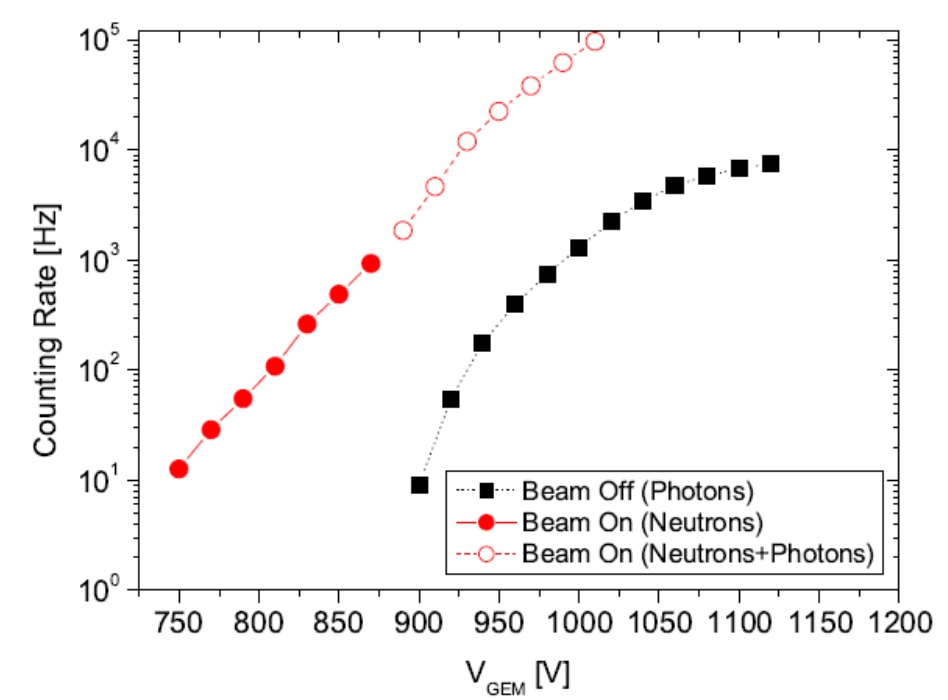 |
A second measurement was performed at VESUVIO at ISIS on a neutron beam line at a distance of about 12.5 m from the water moderator. The working point (gain) of the detector was determined by performing a scan as a function of sum of the voltages applied to the GEM foils (VGEM) when the neutron beam was turned on and off. The former is a measurement of the neutron detection efficiency while the latter gives a result in terms of detection efficiency for gammas coming from the activation of surrounding materials (see Figure). The final working point was 870 V, corresponding to a gain of about 100. |
|
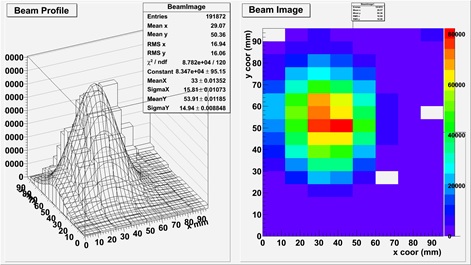 |
The figure shows the intensity 2D plot on a plane perpendicular to the neutron beam axis, collected over an integrated proton beam current of 355 mAh (with an average proton current of 178 mA). The intensity distribution is well described by a bi-Gaussian with FWHM of about 15 mm as expected from technical designs and previous measurements. | |
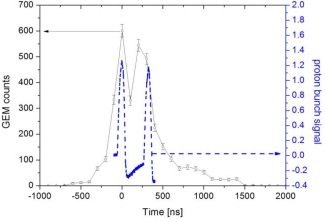 |
The time structure of the VESUVIO neutron pulse was measured by recording over a period of 3 ms the GEM counting rate within 100 ns wide time slices. The rate distribution over the whole period is shown in Fig.9, where the proton beam time structure from the accelerator is also plotted. Because of the time structure of the proton beam, the arrival time onto the detector cannot be associated to a unique neutron energy value. | |
|
This video has been realized using a GEM detector with a fast neutron beam impinging on it during the shutter opening of the Vesuvio facility at ISIS RAL. |

